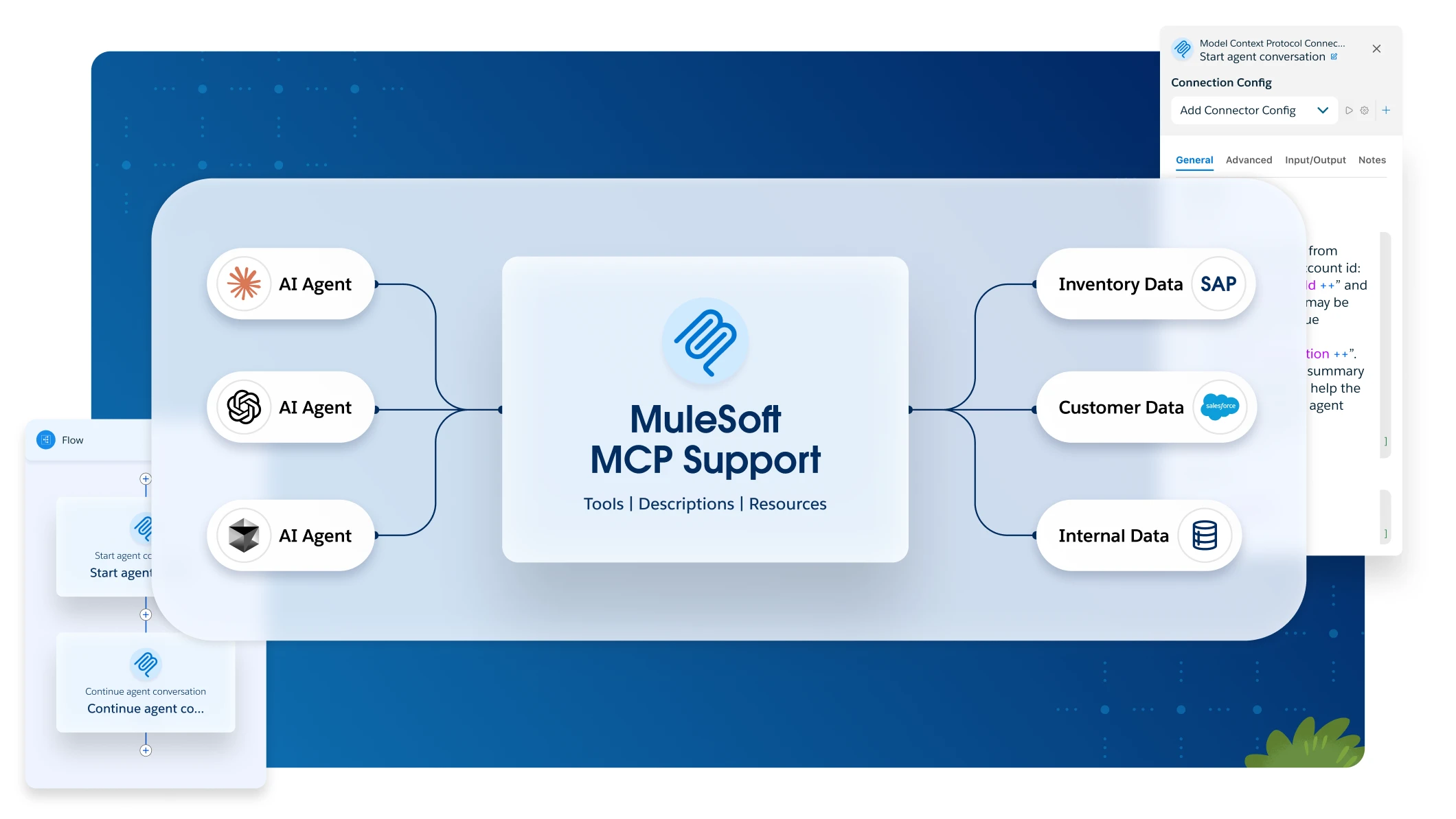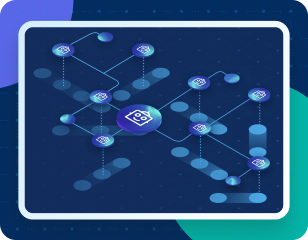The healthcare and life sciences industries are under unprecedented pressure. Rising costs, staff shortages, and increasing patient demands strain providers and payers, while financial concerns force many patients to delay essential care.
Clinicians and administrative staff are overwhelmed, balancing resource shortages and growing workloads. Beyond these challenges, organizations must tackle supply chain inefficiencies coupled with resource shortages and increasing patient and member demands.
Using integration, automation, and agentic technology powered by MuleSoft, healthcare and life sciences organizations can drive better patient outcomes, improve member satisfaction, and build a healthier and more sustainable future.
The challenges facing healthcare today
Healthcare providers are seeing an increasing number of patients delaying routine and preventative care, annual checkups, and necessary procedures. This results in later-stage diagnoses and more complex treatments, adding strain to an already burdened system.
At the same time, telehealth and virtual care services have surged in popularity, offering new ways to connect with patients. While these advancements improve accessibility, they also require significant investments in infrastructure, cybersecurity, and workforce training.
The industry-wide staffing crisis further complicates matters. Clinicians and support staff face record-high burnout rates, leading to severe workforce shortages. Hospitals, private practices, and life sciences companies struggle to retain talent while providing necessary support systems, including mental health resources and childcare.
Without addressing these systemic issues, staff attrition will continue to rise, ultimately affecting patient care and lifespans.
For payers, balancing immediate member concerns with the coordination of real-time services has become more complex. Administrative inefficiencies and data silos create bottlenecks in delivering seamless care.
Additionally, as the global population ages, healthcare costs continue to climb. Chronic diseases are more prevalent than ever, requiring more frequent and expensive interventions.
Fragmentation across the healthcare continuum is another challenge. While specialization allows for more targeted care, it also creates communication gaps and hidden costs, increasing the financial burden on both patients and providers.
Without a strategic, technology-driven approach, these inefficiencies will further strain the system, leading to rising costs, lower patient satisfaction, and overburdened staff.
The roadblock to innovation
How can healthcare organizations move forward amidst these mounting challenges? The need for innovation is clear, but overcoming systemic inefficiencies and integrating new solutions remains a significant hurdle.
Modern technologies have the potential to revolutionize healthcare. However, simply adopting these technologies isn’t enough. The real challenge lies in ensuring these tools work together seamlessly.
Many healthcare organizations struggle with outdated systems (e.g. paper charting and fax machines) that don’t easily integrate with new technologies, creating a major roadblock to progress.
Electronic health records (EHRs) must be connected with emerging apps and systems to provide real-time data access. However, many legacy systems operate in isolation, preventing healthcare professionals from accessing the data they need when they need it.
This lack of connectivity leads to inefficiencies, increased administrative burdens, and delays in patient care.
IoT devices, such as wearable health monitors, also face integration challenges. If a clinician or patient can’t access the collected data in real time, these devices provide little value. Similarly, big data platforms require seamless integration across multiple data sources to deliver meaningful insights, but healthcare organizations often struggle to connect these disparate systems.
To make matters worse, IT teams are under immense pressure. Despite a 30% increase in project demands, only 37% of IT teams can keep up with expectations. This growing gap between business needs and IT capabilities slows innovation, as developers spend more time on complex integrations instead of improving the user experience.
Traditional integration methods, such as point-to-point connections or an enterprise service bus (ESB), can’t deliver on the increasing demand for data interoperability. Without a better solution, healthcare organizations will struggle to implement new technologies effectively and risk falling behind in the rapidly evolving industry.
The prescription for healthcare’s IT challenges
API-led connectivity provides a modern approach to integration, enabling seamless data flow across healthcare systems. Organizations can securely and efficiently connect EHRs, CRMs, telehealth platforms, and other critical applications by leveraging APIs. This approach allows healthcare providers to break down data silos and create a more connected care experience.
API-led connectivity builds on traditional service-oriented architecture (SOA) while addressing today’s challenges. Instead of relying on complex point-to-point integrations, every data asset is exposed as a discoverable, reusable API. This allows developers to integrate new applications faster and more efficiently, while still offering a secure, compliant platform for this sensitive data.
Large healthcare enterprises require structured connectivity solutions, including payers, providers, and life sciences organizations. A well-designed API framework consists of three layers:
- System APIs: Provide secure, managed access to backend systems like EHRs, CRMs, and lab management systems. These APIs allow teams to access and reuse data without needing deep knowledge of underlying systems.
- Process APIs: Orchestrate and combine data from multiple system APIs to create valuable, reusable assets. For instance, a pharmaceutical company could aggregate customer data from various backend systems to streamline interactions.
- Experience APIs: Format and deliver data for different user needs. Whether an EHR, aCRM, or a mobile app, each system can access the same patient data in a format suited to its specific use case.
This structured API approach gives healthcare organizations the agility to adapt to changing market demands. Standardizing connectivity can improve efficiency, enhance data security, and streamline operations.
Closing the IT delivery gap with API-led connectivity
By adopting API-led connectivity, healthcare and life sciences organizations can significantly enhance operational efficiency and meet evolving patient and clinician expectations.
MuleSoft research suggests that organizations leveraging this approach can experience a two to five time increase in project delivery speed, helping them stay ahead in a competitive industry.
Key benefits of API-led connectivity:
- Empowering IT as a platform for Innovation: APIs allow different departments within a healthcare organization to access and act on data independently, while still ensuring only those people who need to access that data have those permissions, accelerating innovation and security.
- Boosting developer productivity: API-led integration eliminates redundant work by enabling developers to reuse components across multiple projects.
- Enhancing predictability and control: Modular integration reduces the complexity of system changes, making it easier to implement updates with minimal disruption.
- Increasing agility with loose coupling: Unlike traditional tightly coupled systems, APIs provide flexibility, allowing organizations to update user-facing applications without overhauling core infrastructure.
- Improving operational visibility: APIs offer end-to-end insight into data flows, enabling IT teams to identify and resolve issues more efficiently.
The future of healthcare and life sciences depends on seamless connectivity
The healthcare and life sciences industries are at a turning point. Rising costs, staffing shortages, and growing patient demands require innovative solutions. While modern technology holds promise, connectivity is the real key to transformation.
API-led integration offers a powerful solution to the IT delivery gap, enabling healthcare organizations to enhance efficiency, improve patient outcomes, and stay ahead in an evolving landscape. By embracing API-led connectivity, healthcare organizations can build a more agile, resilient system that supports providers and patients alike.
Download our in-depth eBook about healthcare IT innovation to explore these concepts in greater detail and learn how to implement them effectively.









